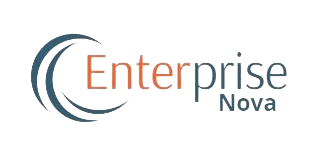Since its creation, the internet has experienced tremendous transformation. From a rigid compilation of web pages (Web 1.0) to dynamic, user-driven platforms (Web 2.0), the internet is currently moving towards a more decentralized, user-powered era (Web 3.0). The way we use, engage with, and comprehend the web has changed with each phase. The main distinctions between Web 2.0 and Web 3.0 will be discussed in this article, along with the innovations that are causing the internet to change.
Web 2.0
Web 2.0 is the current version of the internet (world wide web) as many of us know. The main focus is on static websites, search engines, social media platforms, and online shopping sites which enable users to generate, distribute, and engage with content. Nonetheless, a few dominant corporations rose, raising worries about privacy, censorship, and monopolization of power. Consequently, users started to recognize that their online presence and data is controlled by these said corporations and they saw the necessity for a more open and user-focused strategy.
Key Features of Web 2.0
- Web 2.0 enabled users to actively engage with content and each other through platforms like Facebook, YouTube, and Twitter, fueling global social interaction.
- IT allowed users to create and share their own content, democratizing the internet and giving everyone a voice.
- Led to the dominance of centralized platforms like Google and Facebook, which controlled vast amounts of user data and shaped the online experience.
- Coincided with the rise of smartphones, making the internet and apps accessible on the go.
Pros and Cons of Web 2.0
| Pros | Cons |
| Simple and user-friendly interfaces. | Centralization results in domination by a handful of major tech corporations. |
| Available to a wide range of people | Concerns regarding privacy arise as a result of extensive collection of data. |
| Extensive teamwork and involvement of users | Business models based on advertising may distort the prioritization of content. |
| High-quality media content including videos, pictures, and sound. | Cybersecurity risks increase due to the widespread sharing of user data and personal information. |
Web 3.0
The decentralized web, or Web 3.0, is the envisioned version of the internet. It is designed to tackle some of the issues raised by Web 2.0, including those related to privacy, centralisation, and user control. In order to establish a more transparent, decentralized, and user-focused internet, Web 3.0 incorporates cutting-edge technology such as blockchain, artificial intelligence (AI), and the Internet of Things (IoT).
Key Features of Web 3.0
- Web 3.0 takes control away from a central body. Rather than large corporations monopolizing control, data is distributed among numerous computers, granting users increased authority over their information.
- Web 3.0 uses blockchain to ensure that online transactions are safe and transparent. Digital currencies such as Bitcoin and Ethereum facilitate the functioning of apps without the need for intermediaries.
- Utilizing AI, Web 3.0 enhances websites and applications by providing tailored recommendations and improving search outcomes.
- The emergence of Web 3.0 enables people to engage in online interactions and transactions without having to rely on a central entity, thanks to automated “smart contracts.”
- With Web 3.0, the internet can comprehend and analyze data more effectively, improving the search experience for users.
Pros and Cons of Web 3.0
| Pros | Cons |
| Decentralization gives power back to the users. | At present, it is intricate and challenging for regular users to embrace. |
| Enhanced privacy and security with encryption | Challenges with blockchain technology include scalability and energy consumption. |
| Ownership of data and transparency enabled by blockchain technology | Uncertainty in regulations concerning decentralized networks and cryptocurrencies |
| Enhanced and tailored user experiences |
Differences between Web 2.0 and Web 3.0
| Feature | Web 2.0 | Web 3.0 |
| Architecture | Centralized platforms and servers | Decentralized and peer-to-peer (blockchain) |
| Data Ownership | Companies | Users |
| Interactivity | User-generated content on social platforms | User participation in decentralized networks |
| Monetization | Ad-based models controlled by companies | Token-based economies using cryptocurrencies |
| Privacy | Data is often compromised | Private and Encrypted |
| Security | Vulnerable to breaches | Secured through cryptography and decentralization |
| Smart Contracts | Not Prevalent | Core technology for trustless transactions |
The Future of the Internet
Web 2.0 is still the most common version of the internet today, but Web 3.0 is growing fast. This is because of new technologies like blockchain, digital money systems (DeFi), unique digital items (NFTs), and people wanting more control over their data. However, Web 3.0 is still new, and there are challenges, like teaching people how to use it and creating rules for it.
As Web 3.0 develops, it will give users more control over their personal information and online identity. New kinds of apps and organizations could change industries like finance and content creation, allowing more collaboration and fairness.

